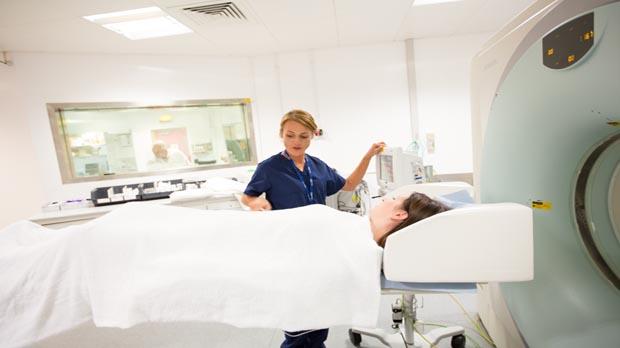
Around 1 in 5 people diagnosed with cancer in the UK take part in a clinical trial.
This trial compared PUVA alone with PUVA and bexarotene (Targretin) for  T cell lymphoma of the skin.
T cell lymphoma of the skin.
Mycosis fungoides is a rare type of non Hodgkin lymphoma that affects the skin. It belongs to a group of conditions called cutaneous T cell lymphoma. Cutaneous T cell lymphomas are cancers of a type of white blood cell, called T lymphocytes.
If you have early stage mycosis fungoides, you may have a treatment using a light activated drug to target the cancer, called PUVA. Although this treatment works well at first, the cancer usually comes back (recurs) and then you need more treatments with PUVA. If you have repeated courses of PUVA, your risk of developing non melanoma skin cancer increases. Doctors would like to be able to reduce the dose of PUVA and so reduce this risk.
This trial looked at a drug called bexarotene. This is a new type of ‘rexinoid’ drug. Rexinoids contain chemicals that are similar to vitamin A. The researchers compared PUVA with a combination of bexarotene and PUVA. They tried to find out
The trial team found that PUVA with bexarotene worked just as well as PUVA alone and the side effects were acceptable.
This was an international phase 3 trial. 93 people were recruited to take part. It was a randomised trial. The people who took part were put into 1 of 2 treatment groups.
Of the 45 people randomised to have PUVA, the researchers were able to look at the results of 38. They found that



Of the 48 people randomised to have PUVA with bexarotene, the researchers were able to look at the results of 40. They found that
The researchers noted a trend towards people needing fewer PUVA sessions. But they said that they could not rule out this happening by chance because not enough people took part in the trial. So it was not a  result.
result.
The researchers concluded that PUVA with bexarotene worked just as well as PUVA to treat mycosis fungoides.
We have based this summary on information from the team who ran the trial. The information they sent us has been reviewed by independent specialists ( ) and published in a medical journal. The figures we quote above were provided by the trial team. We have not analysed the data ourselves.
) and published in a medical journal. The figures we quote above were provided by the trial team. We have not analysed the data ourselves.
Please note: In order to join a trial you will need to discuss it with your doctor, unless otherwise specified.
Dr Sean Whittaker
European Organisation for Research and Treatment of Cancer (EORTC)
National Institute for Health Research Cancer Research Network (NCRN)
If you have questions about the trial please contact our cancer information nurses
Freephone 0808 800 4040

Around 1 in 5 people diagnosed with cancer in the UK take part in a clinical trial.